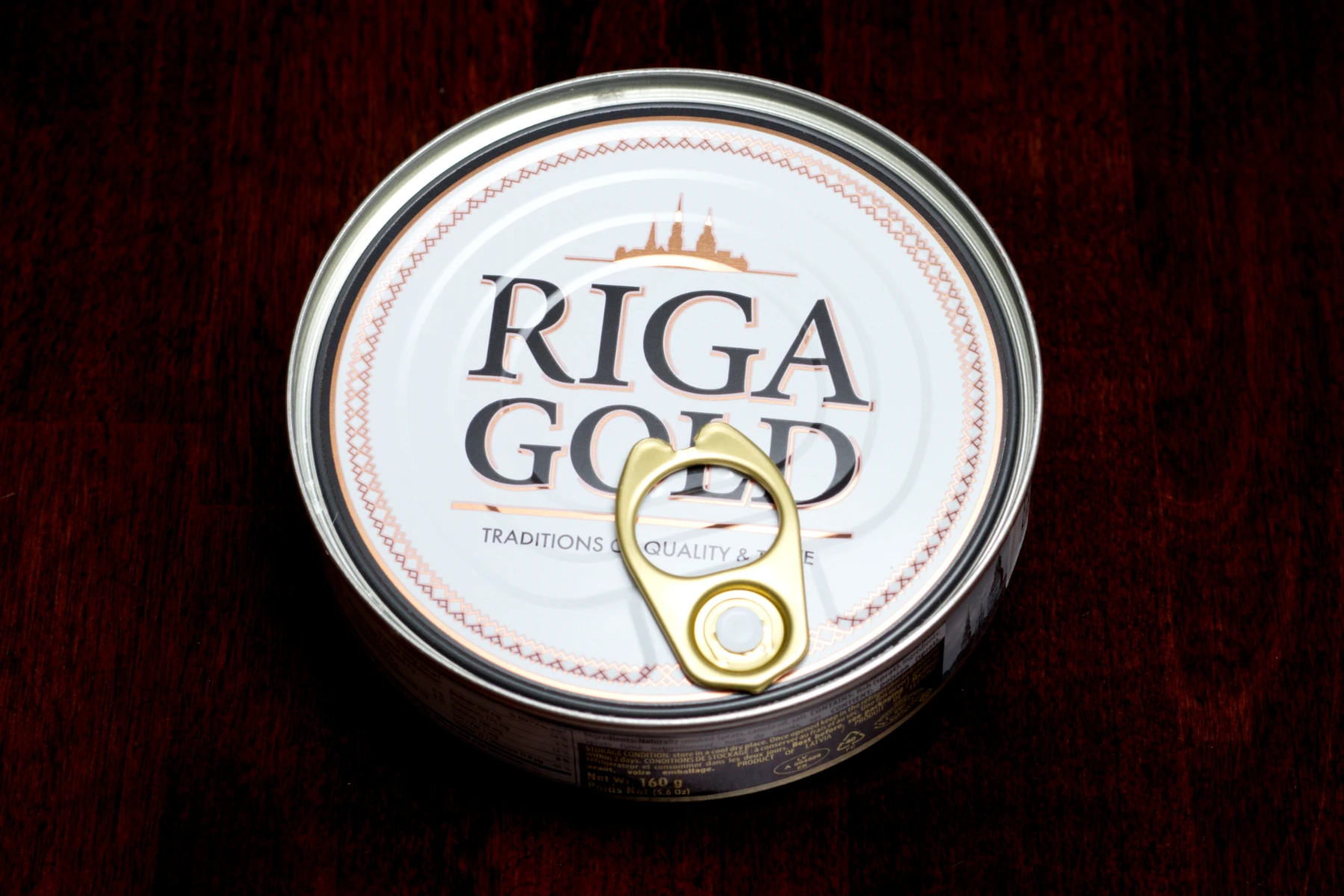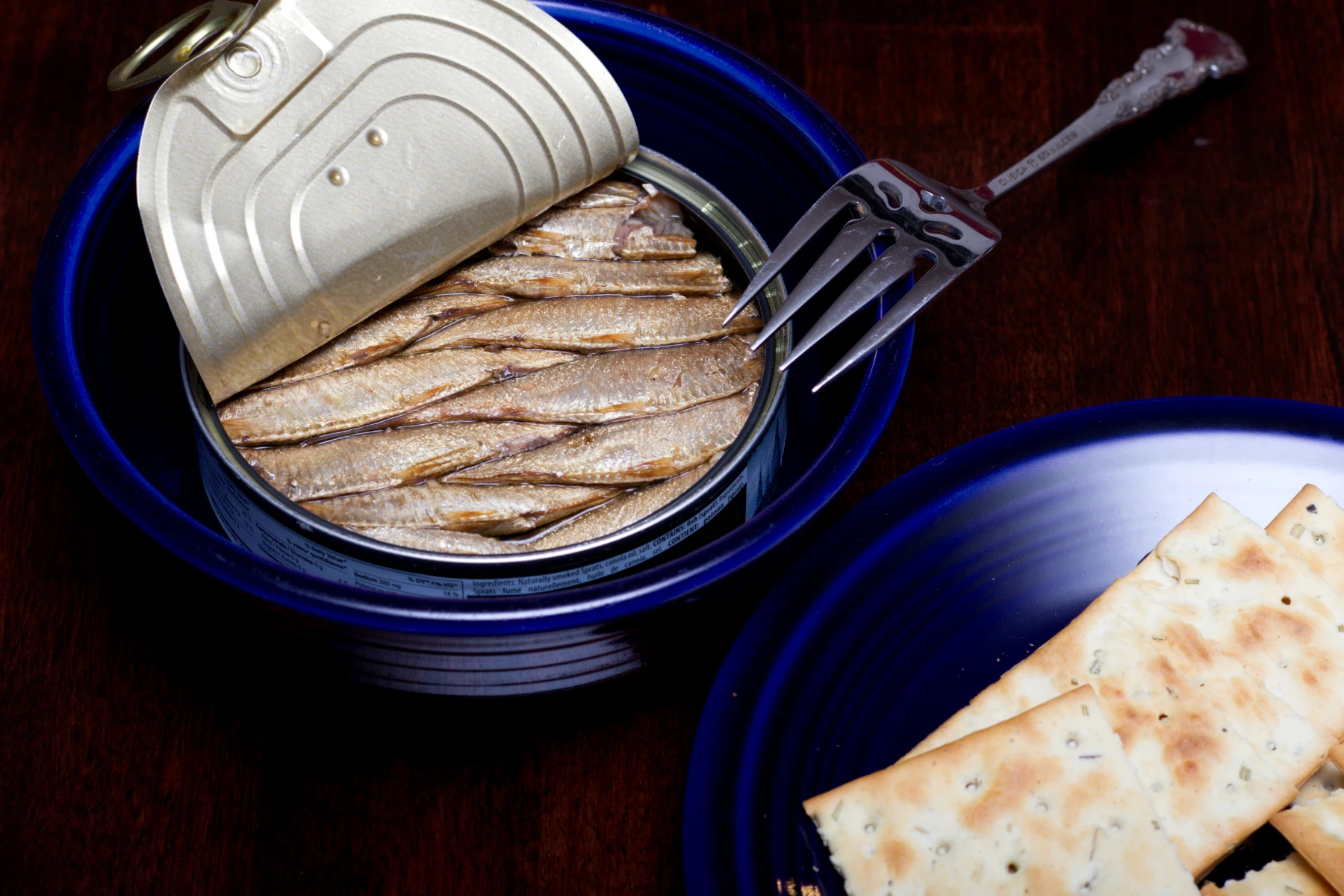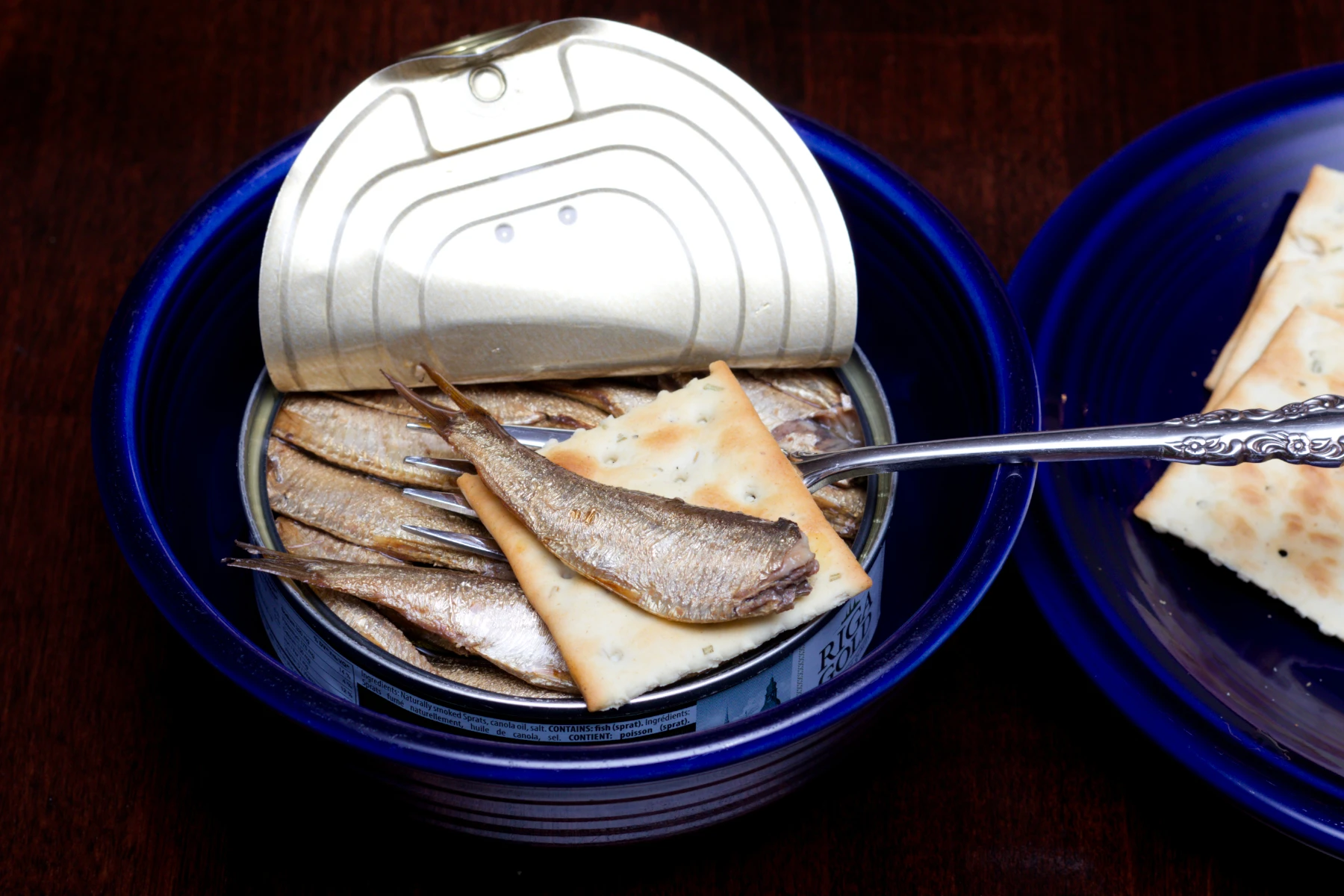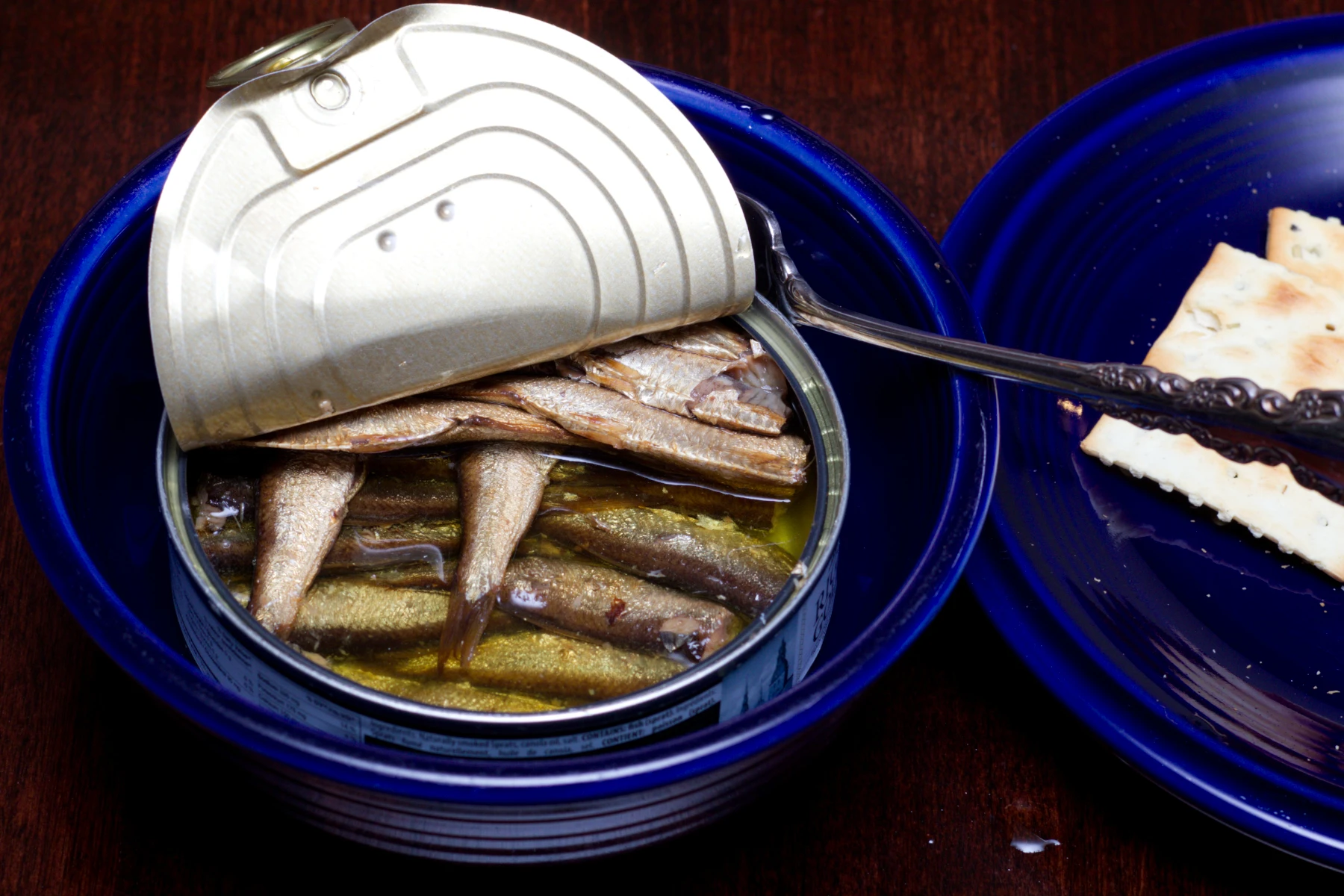Riga Gold Smoked Sprats
Gold Medal Value
Originally Published: Wednesday, June 21, 2023
Specs
 Regal entry from Riga.
Regal entry from Riga.Speaking of Sprats
Hailing from Latvia is one of their most successful commercial exports, Riga Gold Sprats. Sprats belong to the same family as sardines and herrings but are in their own genus. These tiny, oily fish generally end up as prey for larger animals in the food chain, and indeed for us.
Sprats (sometimes called bristling), while not as famous or common as its sardine cousins, they’re an abundant and inexpensive source of vital nutrients and are a favourite in countries bordering the Baltic Sea.
Today’s canned goodie is brought to us in part by our friends at S&F Importers who are in charge of importing these delicious morsels to North America. The Riga Gold brand is a very popular brand in stores all over the world, with canned and jarred seafood of all kinds, the most famous of which are their sprats. The company has a surprisingly small footprint on the internet, so I am not able to find out too much about their history, but they appear to be the premier source of Latvian canned fish.
There are at least two different designs for the packaging of these flat, discus-like cans. One features a black top with artwork of architecture from the ancient city of Riga, and the other (this version), a simple white background with big bold text. As far as I can tell, there are no differences between the contents of the two different shells. The version with the city drawing seems to be more popular amongst the stores in my area.
All That Glitters…
Pulling the ring back caused a spurt of oil to seep out from the crack. The lid put up a bit of a fight, but the rewards were worth the effort. As the top was peeled off a beautifully woven lattice of small fishy delights was revealed. The fillets glimmered and shimmered, giving the illusion that the fish were still swimming in their shoals.
 I mean just look at it!
I mean just look at it!The impact of the visual presentation was quickly overpowered by a gutsy punch of smoke; The smoky flavours that impregnated the fillets in the glistening oil quickly permeated the sinuses and the room. The unmistakeable scent of wood-smoke might be a trigger for some, with one of the worst projected wildfire seasons in North America yet to come. Unpleasant memories aside, the smoky sprats should also evoke images of campfires, bonfires, cookouts, and fireplaces. The only thing stopping my fork from digging into the can of smoked delights was the beautiful woven arrangement of tiny fish, but one cannot judge a fish by its cover, or indeed, its scent.
Panning for Gold
I was careful to stick my fork into the fish as I didn’t want to destroy the aesthetics with my boorish prodding. Surprisingly, the fish were extremely resistant to destruction caused by my tines. The meat was tender enough for my fork to pierce yet firm enough to stay in one piece when extracted from the can.
I popped a piece into my mouth eagerly and was instantly smacked in the face by an explosion of smoke. These sprats did not kid around when it came to delivering on their wood-fired promise. To put it into a related perspective, this is akin to drinking a peated whisky. It’s at this point that I realized I may have an unfair affinity for smoked foods and drinks that encouraged me to rate such products more highly, but it was too late to change now so why bother?
 Rosemary crackers pair beautifully.
Rosemary crackers pair beautifully.Beyond the initial assault of smoke, the fish also offered a nice kick of salt at just the right level for it to stand out as the main protein on a canape, but not so much that it numbed my mouth or dulled my tongue. There was naturally a high amount of fat in these tiny fish, which helped to keep the flesh tender. The fats from the fish combined with the oil in the can to produce a silky texture. There was a satisfying amount of resistance to each bite, but it was never tough to chew through a fillet.
The tiny fish were all deboned, meaning there were no crunchy bits to muddle up the texture. While I usually preferred the bones left in my canned fish, in this case I preferred it without, as the inclusion of bones might distract from what was a very straightforward and impactful experience.
In lieu of bones, the tail fins were left on the fish, adding just a bit of extra texture at the tail-end of the tasting. It also gave you something to hold on to if you were inclined re-enact the dolphin shows from your favourite defunct 90’s aquapark by flinging fish down your gullet.
Flavourful Layers
As I finished the first layer of fish I was filled with a sense of ennui from mangling a layer of intricate fish tapestry. Subsequent layers beneath the first were not as neatly laid out as the presentation layer. With that said, the beauty of these tiny, glistening fish was plenty dazzling on its own.
 Pair with an ice cold beer for an extra good time.
Pair with an ice cold beer for an extra good time.From a flavour perspective, the product is very straightforward and simple. With just four ingredients (fish, smoke, oil, salt) there were no distractions from what the makers wanted to present. The flavours of the fish do come through eventually, past the smokescreen, but wading through the haze was a fun experience as well. While not exactly multidimensional, the flavours were still bold and exciting.
From a value perspective, this is no doubt one of, if not the best value on the market for quality canned fish. At $3.00 CAD a can, with a generous portion size, it is an absolute no-brainer.